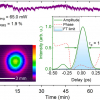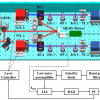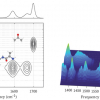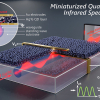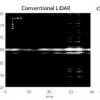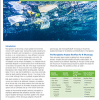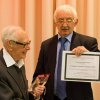
The device, made from a single nanowire, is the smallest spectrometer ever designed. It could be used in potential applications such as assessing the freshness of foods, the quality of drugs, or even identifying counterfeit objects, all from a smartphone camera. A team from the University of Cambridge, working with colleagues from the UK, China and Finland, used a nanowire whose material composition is varied along its length, enabling it to be responsive to different wavelengths across the visible spectrum. Using techniques similar to those used for the manufacture of computer chips, they then created a series of light-responsive sections on this nanowire.
“We engineered a nanowire that allows us to get rid of the dispersive elements, like a prism, producing a far simpler, ultra-miniaturised system than conventional spectrometers can allow”, said first author Zongyin Yang from the Cambridge Graphene Centre. “The individual responses we get from the nanowire sections can then be directly fed into a computer algorithm to reconstruct the incident light spectrum.”
“Our approach could allow unprecedented miniaturisation of spectroscopic devices, to an extent that could see them incorporated directly into smartphones, bringing powerful analytical technologies from the lab to the palm of our hands,” said Dr Tawfique Hasan, who led the study.
One of the most promising potential uses of the nanowire could be in biology. Since the device is so tiny, it can used for direct spectral imaging of single cells without the need for a microscope. The researchers hope that the platform they have created could lead to an entirely new generation of ultra-compact spectrometers working from the ultraviolet to the infrared range. Such technologies could be used for a wide range of consumer, research and industrial applications, including in lab-on-a-chip systems, biological implants, and smart wearable devices. Details are reported in Science.
The Cambridge team has filed a patent on the technology, and hopes to see real-life applications within the next five years.









